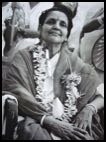Spiritual-Teaching.org
Letter # 15 - Prayer
Prayer is commonly associated with a plea.
Ambrose Bierce said it well in his Devil’s Dictionary: Pray = To ask the laws of the universe to be annulled on behalf of a single petitioner confessedly unworthy.
When I first arrived at Arunachala, prayer was not on my mind as I thought I was fully in control of my life and sort-of-knew where I was going, or pretended that I did. It did not take long to realise that I had little sway over the course of events and much like a dingy tossed about at sea, I held on for dear life hoping the storm of emotions and tangled thoughts would abate. That is when I began to pray for peace and some semblance of calm resolution.
For during the first months at Arunachala, I did wonder what I was doing when I could be off travelling to exciting places in the golden years of travel across Asia before the Russian invasion of Afghanistan changed everything. And yet, some magnetic pull held me in situ.
Whether it was the ashram or the holy hill Arunachala I could never decipher. They seemed to have an identical magnetic pull. I think it was Arunachala that showed me how to pray. It is an odd statement for someone reading this who is not conversant with the life of Sri Ramana Maharshi.
Looking back on that period I was wrapped in a cocoon, mesmerised by the invisible flow of subtle energy. We have all heard of sacred mountains and hills that are important to various religions. Think of Mount Kailas, Jerusalem, Mount Abu, Vezelay, Montserrat, Mount Sinai, and Kilimanjaro…not to mention the sacred peaks in China and Japan and in the Americas. The list is long. They all exerted an influence on anyone receptive to their benign power.
Sri Raman Maharshi is well known for his pure exposition of Advaita Vedanta, the ultimate school of non-duality. But what is less known is his adoration of Arunachala. If there was one object to which he was attached, it was Arunachala. Once he reached the divine hill in 1896, he never strayed more than a kilometre from its vicinity. Even in death, the comet that flew through the sky and over Arunachala at the moment of his death simply emphasised the symbiotic nature of his relationship with this divine mystery. His songs in praise of Arunachala are a model of humility in the presence of a great secret that stands exposed in the shape of what looks like a hill of ancient stone. Near the end of his life, he commented that even though he may die to his physical form, and seemingly be not be available to his devotees, his guru, Arunachala, is always available to all who came to the ashram for comfort.
Born a Catholic and raised in its educational institutions I knew much about prayer. The value of religious education was the inculcation that there was more to life than that which meets the eye and that there is a further invisible life, which reveals itself upon the death of the physical form. Reflecting upon this history now, made me see how important the idea of the transcendental was in giving me hope and a reason to live. That we as human beings were more than our conditioned, limited existences.
It was with this background that I slowly learnt to pray again after years of cynicism. In Sri Ramana’s best-known hymn and loving solicitation of Arunachala, Sri Arunachala Akshara Mana Malai (The Martial Garland of Letters) we see a soul beseeching Arunachala Siva to bestow Grace. If anyone thought Sri Ramana was unfeeling and remote in his pristine understanding of the nature of existence, then let them read his heartfelt, passionate outpourings of love and worship of Arunachala. The Martial Garland of Letters is chanted at least twice a day in the ashram and its bhava (feeling) permeates the ashram precincts.
Sri Ramana’s life and teaching is an inextricable combination of jnana and bhakti yoga. Knowledge and devotion. The definition of a mahatma is one whose life is a seamless combination of mind, speech and action. There is no inconsistency, pretension or hypocrisy in a mahatma. In other words, what you see is what you get. As a mahatma, Sri Ramana was an open book. He was always available and had no private life. His purpose in life was to show the way to others through compassion, understanding and inimitable, fresh insights on how to go about one’s business of finding out who one is when shorn of the accumulation of thoughts, feelings and identifications that we mistakenly believe defines us.
Enter here to return to Contents


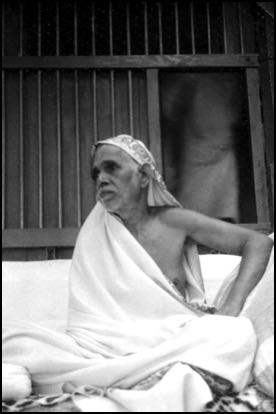
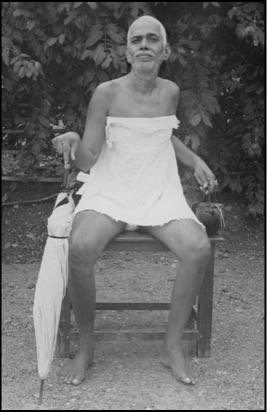

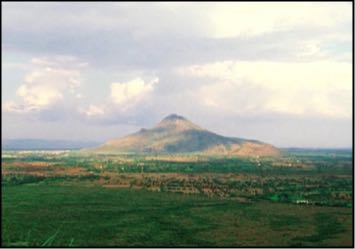
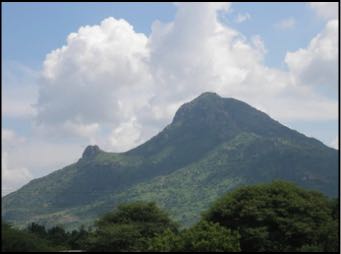
With these factors in mind, prayer is not an unusual practice when following the teachings of Sri Ramana. In fact, it is a natural outcome of one’s enquiry into the Self, Who Am I? We realise that we do not live entirely in our intellect and that our emotions are equally important. It is a mistake to believe that if we know all the answers to all the questions in Advaita then we know all there is to know. Quite the contrary, we have only just begun. We now must shed our so-called knowledge and be naked before the mysterium.
And it is here that prayer is critical for without it we are stuck in our minds with its smoke and mirrors.
The written legacy he left us can be divided into three categories: the pure teachings on Advaita in such works as Nan Yar? (Who Am I?), Upadesa Saram (The Essence of Instruction); the poems of devotion addressed to Arunachala; and the translations into Tamil from Sanskrit Advaitic texts such as Atma Bodha, Dakshinamurti Stotra etc.
So, it may come as a surprise to many Westerners that Sri Ramana was not solely an exemplar of pure intellectual logic and understanding alone but displayed an intense, emotional devotion.
Sometimes he would tell the story of an incident in the life of a saint and it was not uncommon when a climax arose at a heartbreaking moment for him to be unable to proceed further because of the tears in his eyes.


